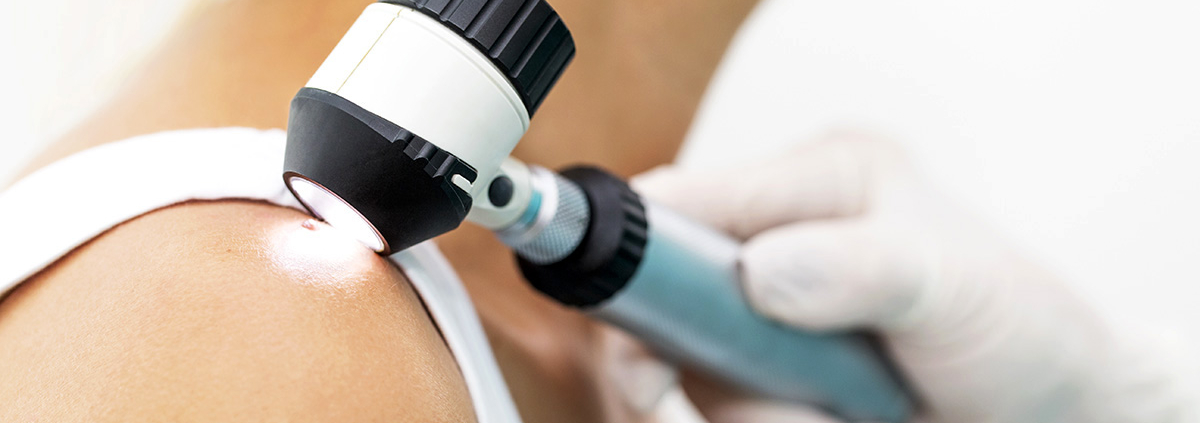Detecting Early Signs of Skin Cancer: What to Watch For
Skin cancer is one of the most common types of cancer worldwide, and its incidence continues to rise due to increased exposure to ultraviolet (UV) rays and changing environmental conditions. The good news is that when detected early, skin cancer is highly treatable. But early detection starts with awareness—knowing what to look for on your skin and understanding when it’s time to consult a dermatologist.
In this blog, we’ll explore the early signs of skin cancer, how to spot them, and when you should seek medical attention. Knowing these signs could be the key to preventing a minor skin issue from developing into something more serious.
Understanding Skin Cancer
Skin cancer occurs when skin cells grow uncontrollably due to DNA damage, usually caused by excessive UV radiation from the sun or tanning beds. The three major types of skin cancer are:
- Basal cell carcinoma (BCC)
- Squamous cell carcinoma (SCC)
- Melanoma (the most dangerous form)
Each type has distinct characteristics and risk factors, but all three can present with noticeable signs on your skin if you know what to look for.
Common Early Signs of Skin Cancer
Identifying early signs of skin cancer can dramatically increase the chances of successful treatment. Here are some key changes to monitor:
1. New Growths or Sores That Don’t Heal
If you notice a new bump, mole, or sore that persists for several weeks and refuses to heal, it may be a sign of basal or squamous cell carcinoma.
2. Changes in Existing Moles
Keep an eye on your existing moles. If a mole starts to change in color, size, border, or shape, this could indicate melanoma.
3. The “ABCDE” Rule
Dermatologists use this rule to assess moles for melanoma:
- A – Asymmetry: One half doesn’t match the other
- B – Border: Irregular, scalloped, or poorly defined edges
- C – Color: Varies in shades (brown, black, red, blue)
- D – Diameter: Larger than 6mm (about the size of a pencil eraser)
- E – Evolving: Changes in size, shape, or color over time
4. Unusual Red or Scaly Patches
Rough, scaly, reddish patches on the skin that may itch or bleed can be early indicators of squamous cell carcinoma.
5. Waxy or Pearly Lumps
Basal cell carcinoma may appear as a shiny, skin-colored or pink bump. It may resemble a pimple that doesn’t go away.
High-Risk Areas to Monitor
Skin cancer can appear anywhere, but it’s most common in areas frequently exposed to the sun. Pay attention to:
- Face, nose, and ears
- Scalp (especially in bald individuals)
- Neck, shoulders, and upper back
- Arms and hands
- Legs (especially in women)
- Chest and torso (especially in men)
That said, melanoma can also appear in places not exposed to the sun, including the soles of the feet, under nails, and even in the eyes.
Who Is Most at Risk?
Although anyone can develop skin cancer, some individuals have a higher risk:
- People with fair skin, light hair, and light eyes
- Individuals with a history of sunburns
- Those who use tanning beds
- People with many moles or atypical moles
- Individuals with a family history of skin cancer
- Older adults (risk increases with age)
- Those with weakened immune systems
Being in a high-risk group means you should be extra vigilant about regular skin checks and professional screenings.
Importance of Self-Exams
Performing a full-body skin check once a month is a great habit to adopt. Use a mirror (and a hand mirror for hard-to-see areas) to inspect your skin from head to toe.
Tips for a Thorough Self-Exam:
- Check the scalp by parting hair
- Look under nails, soles, and between toes
- Examine your back using a mirror or a partner
- Take photos of suspicious moles for comparison over time
When to See a Dermatologist
If you notice any of the early signs listed above, it’s important not to delay seeing a dermatologist. Early evaluation can lead to early diagnosis and potentially lifesaving treatment.
Medical Tests May Include:
- Visual inspection
- Dermatoscopy (examination using a magnifying tool)
- Skin biopsy (removal and lab testing of the suspicious area)
Prevention Tips to Reduce Your Risk
While not all skin cancers are preventable, there are practical steps you can take:
- Use broad-spectrum sunscreen with SPF 30+ every day
- Avoid sun exposure between 10 a.m. and 4 p.m.
- Wear protective clothing, wide-brimmed hats, and sunglasses
- Seek shade whenever possible
- Avoid tanning beds
- Regularly reapply sunscreen, especially after sweating or swimming
- Visit your dermatologist yearly for a professional skin check
Conclusion
Being aware of the early signs of skin cancer is your first line of defense against a potentially serious disease. By performing regular skin self-exams, protecting your skin from UV rays, and visiting a dermatologist for routine check-ups, you can detect skin cancer early—when it’s easiest to treat.
Don’t ignore that small mole, red spot, or persistent scab. In the world of skin health, it’s always better to be cautious than careless. Stay informed, stay observant, and prioritize your skin’s well-being.











Leave a Reply
Want to join the discussion?Feel free to contribute!